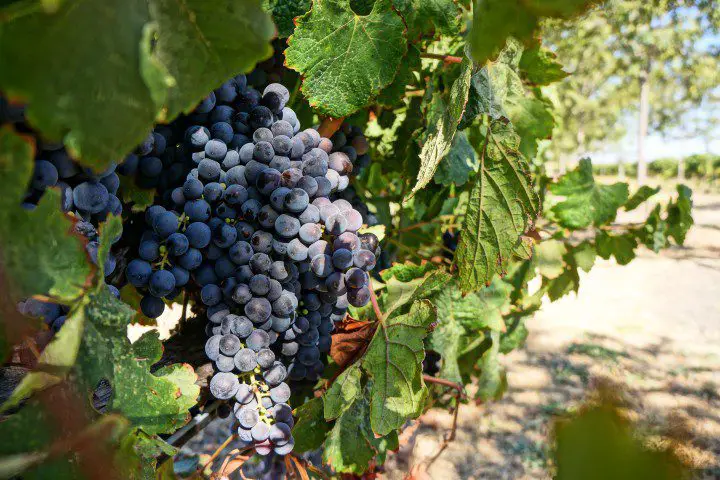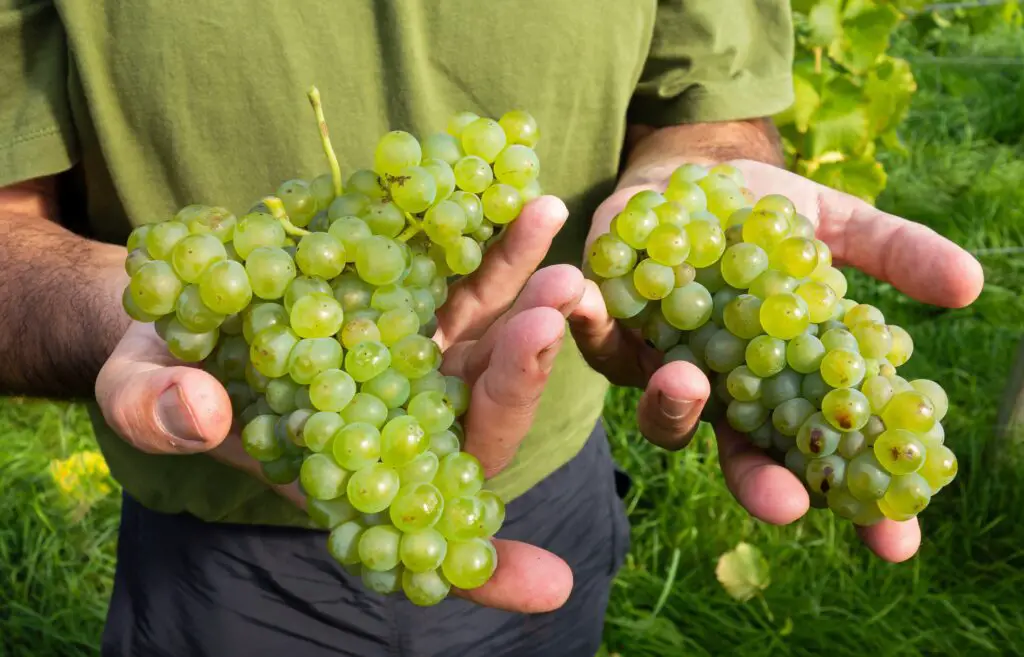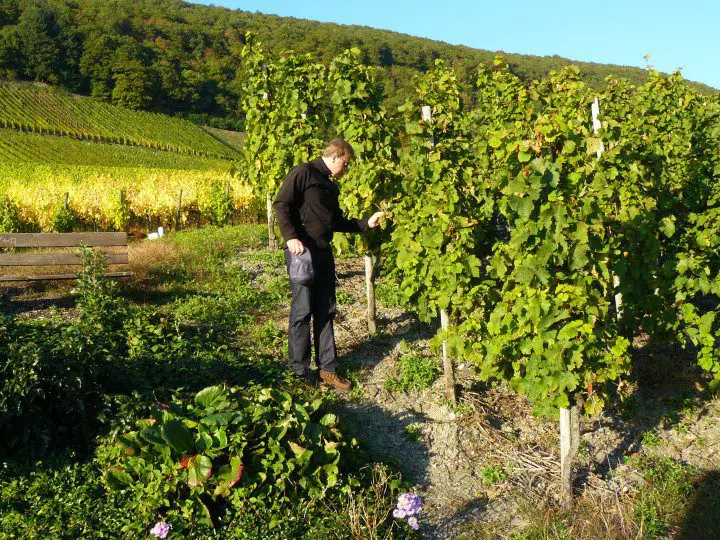Today, I will discuss how you can grow grapes in your home garden.
Growing grapes in a home garden is a fun and pleasurable activity. With any luck, it will become even more enjoyable when you get the fruit of your efforts in the year following planting. Yes, grapes can indeed start bearing in the second year of growth!
There are hundreds of varieties of grapes that are grown in home gardens in the USA. They have many different growing requirements and bearing habits, so if you are planning to grow grapes in your home garden, it is essential to choose a suitable variety.
Table of Contents
Quick Facts about Grapes
- Grape vines are woody and perennials (evergreen).
- Direct sunlight is crucial for fruit ripening.
- A six-foot vine-to-vine distance is recommended for proper ventilation.
- Canes (fresh branches) produce flowers and fruit.
- The plant begins to produce fruit one year after planting.
- Wind and insects are two important pollination factors.
- The grape vines can be trained into many ornamental forms.
- Yearly pruning is crucial for healthy, abundant fruit production as the grapes bear on new growth.
- Trim the grape vines before the leaves appear in late February or early March.
Choose your Variety Carefully

The first and most crucial step in grape planting is to choose a suitable variety. The selection will depend upon how you plan to use the grapes and the climate that you live in. The following are some of the grape varieties recommended for USDA zones 3-4.

Bluebell
- Used for fresh consumption, juice and jelly.
- Harvested in mid-September.
- Thrives in zones 3-4 and it tastes much like a concord grape.
Frontenac
- Used for fresh consumption and red, port and rose wines.
- Harvested in late September to Early October.
- Does well in zones 3-4.
Edelweiss
- Used for table grapes and sweet wine.
- Harvested in late August to Early September.
- Yellow-green in color, they have a floral aroma, and thrive best in zone 4.
St. Croix
- Used for making wine.
- Harvested in late August to early September.
- Well known as a wine grape and can also be used for fresh consumption.
Muscadine
- Used as table grapes and winemaking.
- Can be harvested in early August to September.
- It is native to North America and thrives in zones 7-9.
Planting Grapes in your Home Garden:

The easiest way to plant grapes is through cuttings. The best time for this is typically late February through early March. You can buy grape plant cuttings or cut them from the plants of friends and neighbors if you are so lucky to have friends like this. The other way is to buy one-year-old plants that go dormant in spring and can be replanted.
Pre and Post-Planting Practices:
- Soak the roots in water for three to four hours.
- Remove all canes, leaving the strongest one before planting.
- While planting vines, keep the lowest cane bud just above the soil line.
- Remove all the roots that are damaged or too long.
- Create a hole according to the length of the roots.
- Plant the cane into a very wet slurry of planting soil and water to eliminate any air pockets.
- Mulch the plants to keep the soil cool and moist, allowing the plant to thrive.
- Keep the plants moist for the first year of growth, watering deeply once a month to encourage deep root growth.
- Train the vines over structure to keep them out of the weeds and to give them plenty of air and sunlight.
Pruning the Grape Vines:

Pruning a grape is mandatory for keeping it bearing and healthy in the coming years. As mentioned earlier, grapes bear fruit on new growth, so if you do not prune the plant, it will not produce abundant fruit.
- Spring or Feb to March is the best time to prune grape vines.
- Spring season is a crucial stage in grape bearing because it enables them to produce abundant fruit.
- The type of pruning that a grape plant needs will depend on its growth purpose; is it planted for fruit, decorative purposes, or raising a nursery.
- Prune grapevines to 1-2 trunks and 2-4 cordons (woody branches) and bud-containing spurs (spurs produce fruit in the next season).
Note: Grapes produce flowers and fruit on the buds from the previous year’s growth. Therefore, pruning to encourage new growth is recommended, but never prune the plant intensely.
Protection and Prevention of Diseases and Insects Pests of Grapes
Some factors can promote disease in grape vines, including improper air circulation, weather conditions, poor sanitary conditions, winter damage, etc. All these factors affect the plant’s bearing capability for the coming season.
Insect Pests:
- Japanese Beetles
- Spotted Wing Drosophila: It preferably attacks strawberries and raspberries. Do not plant grapes and berries together in the garden, and keep the surrounding area of vines clean
- Multicolored Asian Lady Beetles & Yellow Jackets: Attack on ripening grapes can damage the entire plant in no time.
Diseases:
- Powdery Mildew: It’s a fatal disease for grapes and attacks all parts of the plant. It is a fungal disease and prevails due to poor air circulation between the plants, insufficient light penetration, humidity, etc.
- Downy Mildew: It’s a fungal disease; first signs appear as small lesions on the surface of leaves that later turn brown and wither.
- Fruit Rot: Common types of grape fruit rot includes botrytis bunch rot, black rot, Phomopsis, anthracnose, sour rot, etc. This disease attack is so severe that it damages the whole plant in wet and humid conditions.
Herbicide Damage:
Grape plants are susceptible to herbicides, especially 2-4D, and Dicamba. Home gardeners using these dangerous chemicals to control weeds must realize that even a little bit of these harmful chemicals floating through the air can be very harmful to your grape plants.
Conclusion

Planting grapes in your own home garden can be a gratifying endeavor. While it is certainly not the easiest plant to grow, and it will take you a good long time before you get what you might consider a bountiful harvest, there aren’t many plants as versatile as the grape. The fruit can be eaten fresh, dried into raisins, made into wines, jellies, and jams, and the vines can be used as decorations and to create wreaths. Besides all of these benefits, the grape vines themselves, with their climbing and hanging tendrils can be quite beautiful.

